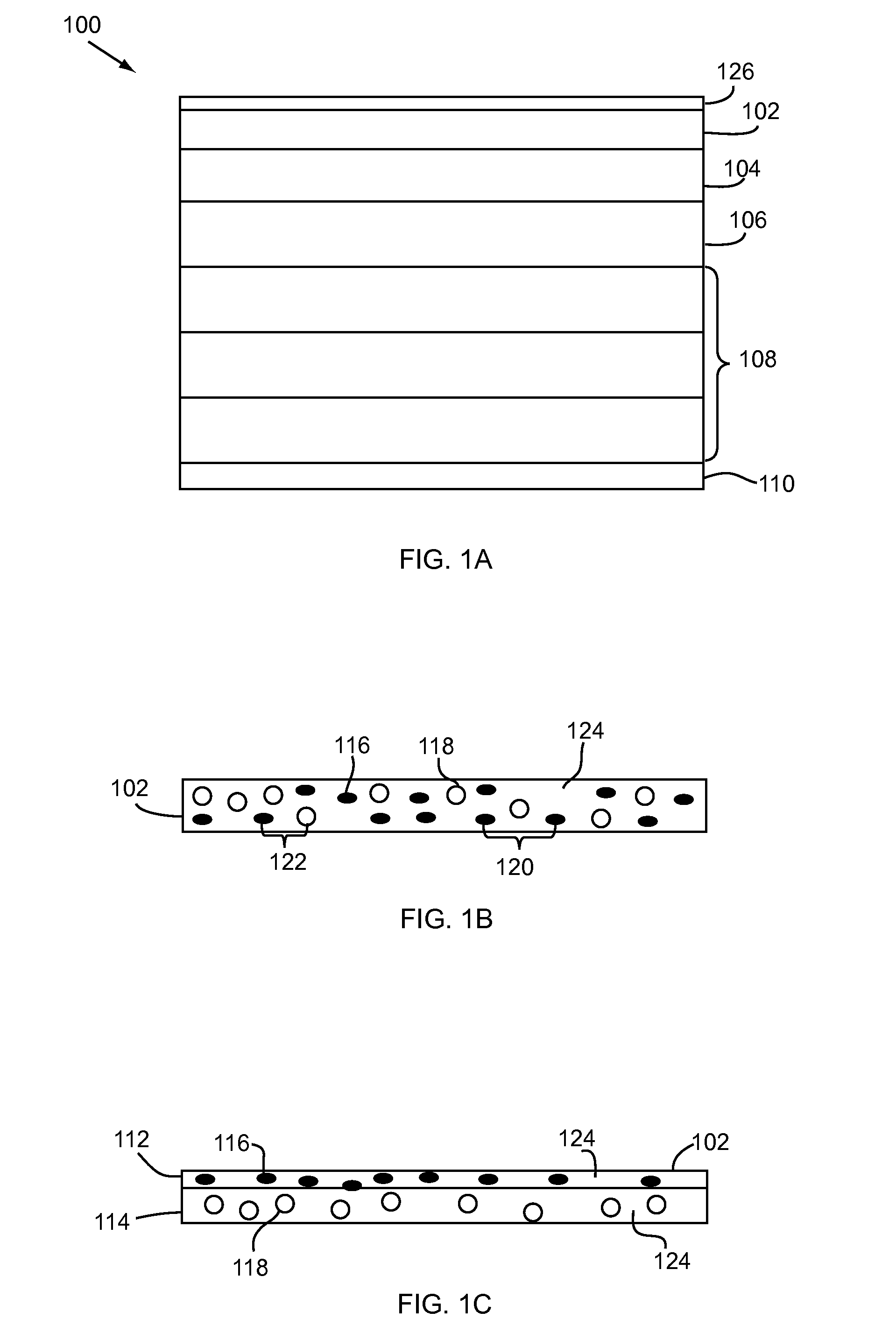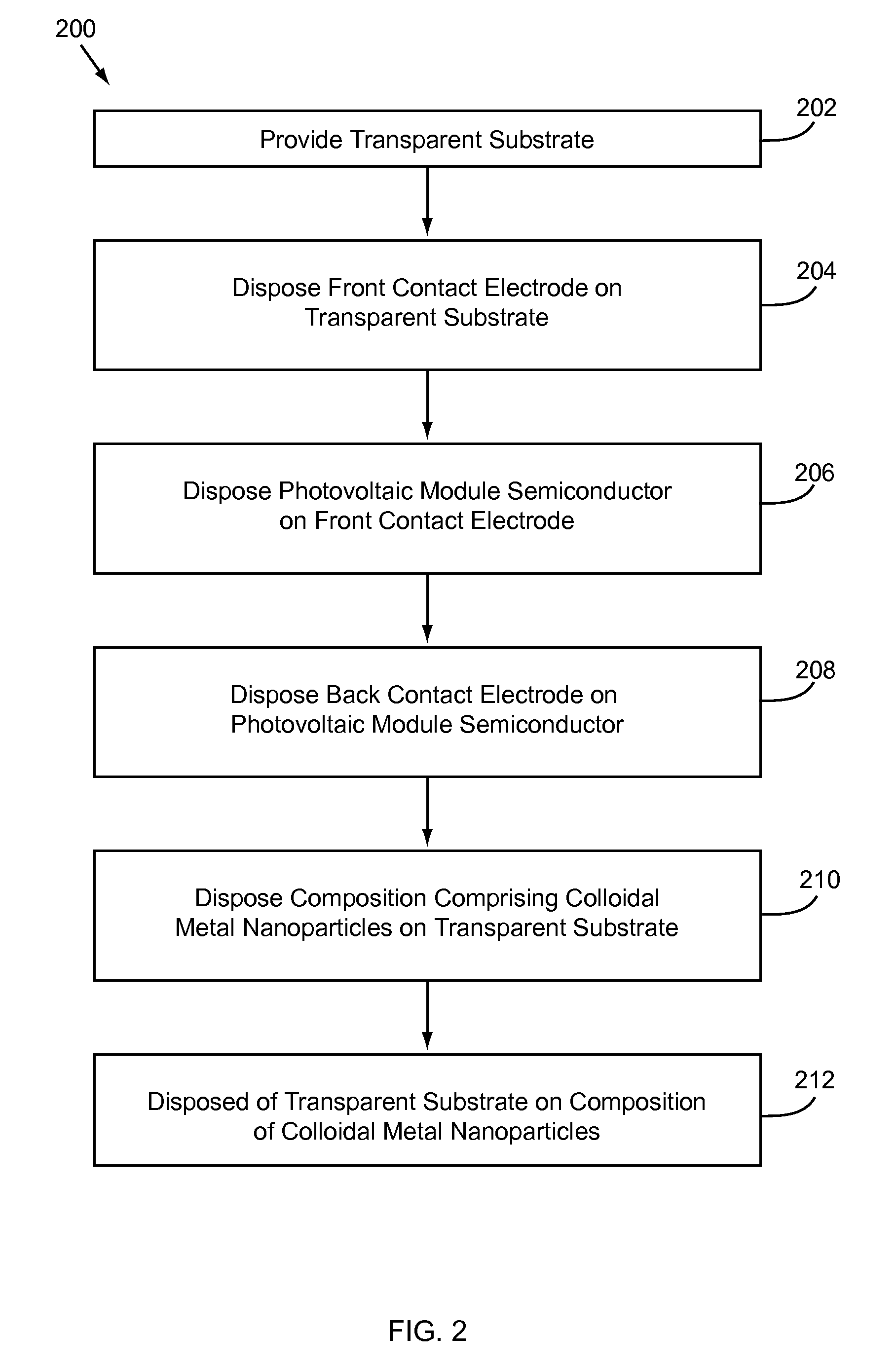Nanoparticle Plasmon Scattering Layer for Photovoltaic Cells
a photovoltaic cell and nanoparticle technology, applied in nanotechnology, coatings, semiconductor devices, etc., can solve the problems of reducing photocurrent, compromising the efficiency of blue photon absorption, and reducing photocurren
- Summary
- Abstract
- Description
- Claims
- Application Information
AI Technical Summary
Benefits of technology
Problems solved by technology
Method used
Image
Examples
Embodiment Construction
[0024]It should be appreciated that the particular implementations shown and described herein are examples of the invention and are not intended to otherwise limit the scope of the present invention in any way. Indeed, for the sake of brevity, conventional electronics, manufacturing, semiconductor devices, and nanocrystal, nanoparticle, nanowire (NW), nanorod, nanotube, and nanoribbon technologies and other functional aspects of the systems (and components of the individual operating components of the systems) may not be described in detail herein. Further, the techniques are suitable for applications in electrical systems, optical systems, consumer electronics, industrial or military electronics, wireless systems, space applications, or any other application.
[0025]As used herein, the term “nanoparticle” refers to a particle that has at least one region or characteristic dimension with a dimension of less than about 500 nm, including on the order of less than about 1 nm. The term “n...
PUM
| Property | Measurement | Unit |
|---|---|---|
| size | aaaaa | aaaaa |
| size | aaaaa | aaaaa |
| size | aaaaa | aaaaa |
Abstract
Description
Claims
Application Information
 Login to View More
Login to View More - R&D
- Intellectual Property
- Life Sciences
- Materials
- Tech Scout
- Unparalleled Data Quality
- Higher Quality Content
- 60% Fewer Hallucinations
Browse by: Latest US Patents, China's latest patents, Technical Efficacy Thesaurus, Application Domain, Technology Topic, Popular Technical Reports.
© 2025 PatSnap. All rights reserved.Legal|Privacy policy|Modern Slavery Act Transparency Statement|Sitemap|About US| Contact US: help@patsnap.com



